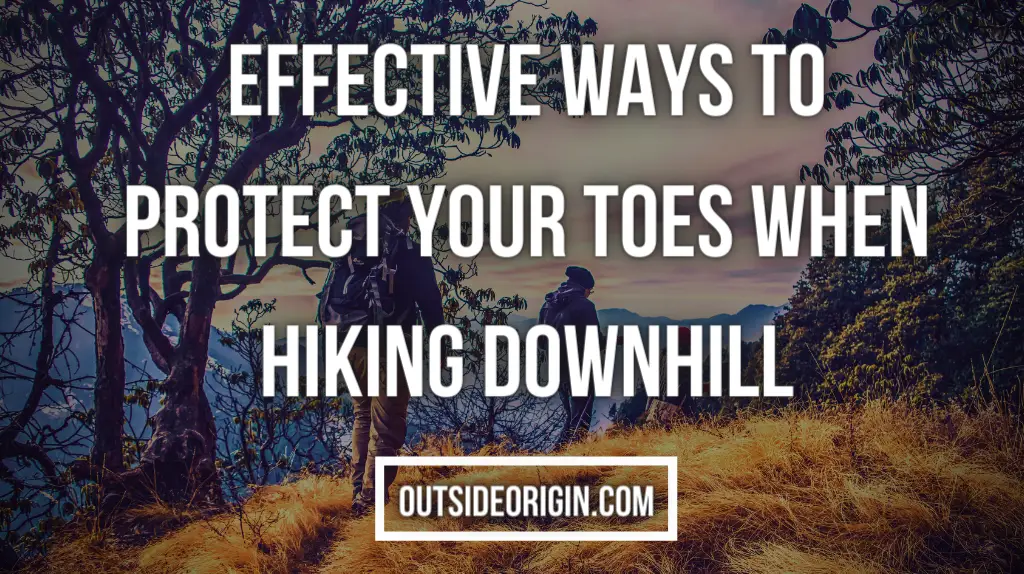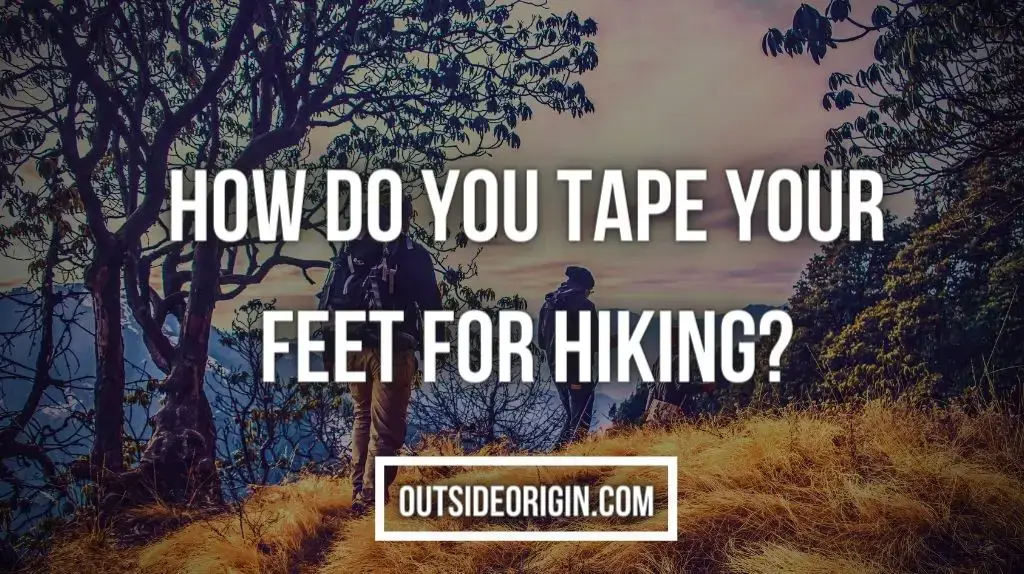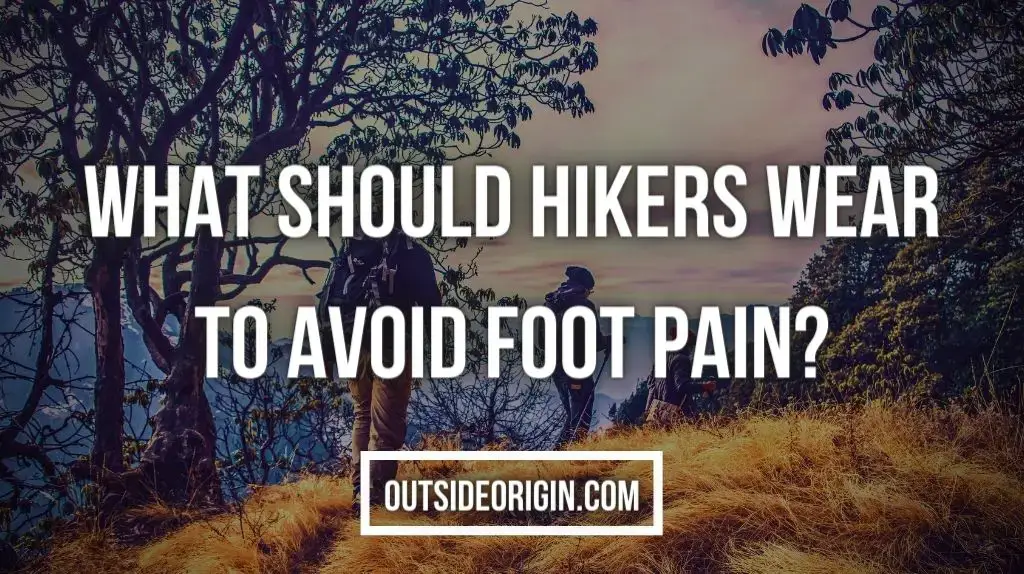Hiking is a great way to get some exercise and fresh air. However, you could end up with painful toes if you’re not careful. This is why I put together a guide that goes over 18 different ways to protect your toes when hiking downhill!
- Check your toenails before and after hiking
- Get the right hiking boots.
- Cut your toenails straight
- Take advantage of a hiking pole
- Make sure your boots are shock resistant and have arch support
- Get a quality insole to keep your foot in place
- Learn Proper Lacing Technique
- Get some quality socks
- Let your feet get some fresh air once in a while
- Make sure your backpack is lightweight
- Take advantage of some foot powder
- Walk down in a zigzag pattern to avoid toe injury
- Have breaks in between
- Keep your feet clean and dry
Below I will go over each of these 18 ways to protect your toes when hiking downhill in more detail!
18 Best Ways To Protect Your Toes When Hiking Downhill – Avoid Toe Injury
1. Check your toenails before and after hiking
If you just go for the occasional hike here and there, then there is no need to pay much attention to your toenails.
However, if you are serious about hiking you need to check them every time you go hiking and after you have hiked.
You can get away with having longer toenails if you are just walking around but, when you are hiking you need to make sure your toenails are short. This becomes more important when you are hiking downhill.
As you go downhill, your toes will be near the front of the boot this can cause your nail to hit the inside of your shoe when you are coming down.
This can cause swelling if it’s a long trek. Your toenail might press up against the soft skin of the toe next to it which can lead to blisters or a hot spot.
Make sure to check your toes after you are done hiking as well to make sure no injuries are present.
2. Get the right hiking boots
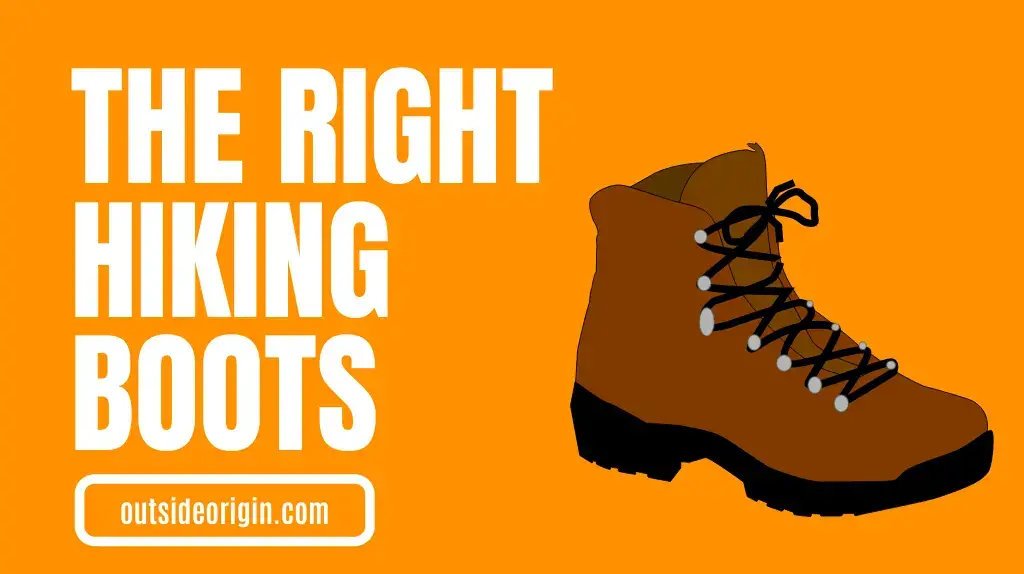
When it comes to hiking, having the right boots is extremely important.
You are going to be putting a lot of pressure on your feet, especially since you’re going downhill hiking so you need quality footwear that will protect them from all types of rugged terrain.
You don’t want to choose shoes that are too tight since they won’t be able to flex and mold around your foot when you walk. You also need sturdy boots with good grip so you can stay steady on the trail when it’s wet, slippery, or steep.
Look for these things when getting proper hiking boots:
- Make sure you buy boots that are bigger than your standard size to reduce friction and give your toes more wiggle room.
- Make sure they are not TOO tight because it will cut off your circulation
- The boots should bend and flex when you walk, along with being able to withstand weather conditions without a problem.
- Make sure your hiking boots can support the extra weight and have solid arch support for long hikes.
- Make sure the arch support is in the right position to keep you from having problems with Plantar Fasciitis or Achilles tendonitis.
I personally alternate between this and this when I go hiking.
3. Break Your Hiking Boots In
If you decide to buy brand new hiking boots, you want to break them in so that your foot gets used to them.
You can do this simply by:
- Start by wearing them either in the house or around the park.
- Walk till it starts to hurt a bit.
- As soon as your feet start to hurt, remove them and rest.
- Keep doing this until you no longer feel any pain!
You need to make sure the boots feel good on your feet when you are hiking since it’s not just about breaking them in.
It is also important that they fit well and don’t rub because that can cause blisters during or after a hike.
4. Cut your toenails straight
Make sure your toenails are properly trimmed before hiking to ensure you don’t have any issues!
Your toenails should be cut straight across, not too short, and never rounded. The reason for this is because it increases the risk of ingrown nails which can lead to infections.
Also, your toenails are much more likely to break or crack if they end up getting caught on something. When you cut your nails at an angle it makes them thinner which can lead to injuries in some cases.
Another small benefit of cutting them straight is that you will be less likely to experience blisters.
One thing you want to make sure of when it comes to having straight toenails is that you file them in one direction only and not back and forth like they do at most nail salons. This can cause your nails to split apart, which will rip the skin around your toe the next time you take a step down with force on your feet.
This type of splitting is usually what causes people who hike regularly to develop black toenails.
Quick Tips For Cutting Toenails For Hiking:
- Cut it straight and don’t round them off.
- Make sure they are not too long
- Make sure they are not too short
If you are going to be hiking downhill often, I highly recommend getting a high-quality clipper designed specifically for toenails as they tend to cut straighter.
I personally use this podiatrist toenail clipper.
I made a guide on how to cut toenails for hiking here that you can check out!
5. Next Time You Go Hiking Make Sure To Pack Nail Clipper In Your Bag
If you are going to be doing a lot of hiking then I would highly recommend taking a nail clipper with you while hiking.
Just in case you accidentally damage your toenails, it is always good to have a small nail clipper with you in case of emergencies.
6. Take advantage of a hiking pole
Many hikers take the approach of using a hiking pole to help them with their balance while going downhill.
Make sure the poles are within reach so that you can use them if needed!
The other benefit of using a hiking pole is it will take some pressure off your knees.
You can use it when crossing steep streams or other obstacles on the trail so you don’t need to put pressure on one foot for too long.
Some hikers do prefer to have two poles, but this is more of a personal preference than anything else. Even if you forgot to bring any hiking poles with you, you can always ask someone for a spare in case your poles break.
I use this Montem Strong trekking pole. They are VERY comfortable and have lasted me a long long time.
7. Make sure your boots are shock resistant and have arch support
It is crucial that you get some boots that are shock resistant and have arch support.
This will help add cushioning to your boots when stepping downhill to prevent bruising on the toes or feet, and other injuries.
Keep in mind that even with hiking boots that have good arch support and shock resistance, over time they tend to be less effective because they flatten after some time.
TIP: You can also replace the insole of your boots since it might be cheaper to do that instead.
8. Get a quality insole to keep your foot in place
Having an insole that has a proper arch specifically designed to avoid injuries can not only protect your toes but your feet as well.
You want the insole to fit snugly inside your shoe so you don’t have any issues with slipping while going downhill.
Getting Insoles alone has made it so I get no pain or any bruising on my toes and feet.
I personally use this SoulInsole which has lasted me a long time. I have tried a lot of different insoles and these ones seem to have way more cushion and support.
9. Don’t forget to carry an extra insole in your bag
You don’t want to be in the middle of nowhere and realize that your arch support has gone flat.
This could cause an injury which is why I personally have 2 backup insoles in my backpack just in case it’s better to be safe than sorry.
10. Learn Proper Lacing Technique
One of the most common problems with hiking downhill is that your foot will slide forward in your boot when you step down.
Having a good lacing technique can help prevent this from happening which will reduce slippage inside boots, especially when going downhill on trails that are very steep!
Something to keep in mind though if you have wide feet or wear shoes that are slightly on the larger side, this may not help prevent sliding around inside your boots.
You can try to tighten up any extra lace loops so there is less movement within the boot itself which will reduce slipping and bruising of toes or feet if it’s slightly bigger.
Few lace techniques for hiking boots that you can check out:
11. Retie your laces if they get loosened
If your laces come undone, make sure to retie them as soon as possible.
You don’t want the boots to be too loose as this could cause you injury if they slip off when hiking! You can imagine how that could be dangerous.
Make sure you tie your boot laces properly because they can get entangled in something and cause you to trip over.
12. Get some quality socks
You might be surprised at how much quality socks can help reduce the risk of injury to your toes while hiking.
I would recommend wearing a moisture-wicking sock which helps prevent blisters from occurring or at least makes them less severe if they do occur.
Also, make sure you avoid cotton socks while hiking. Cotton tends to make your feet sweat more which can be very dangerous since you want the sock material to help pull that moisture away from your feet.
These are the socks that I personally wear, however, you can go for any other type of moisture-wicking / hiking socks.
Some people suggest wearing double socks but that can be an extra hassle you have to take in case you want to remove them.
Having 2 socks with an insole and then boots on top is overkill and definitely not necessary.
13. Let your feet get some fresh air once in a while
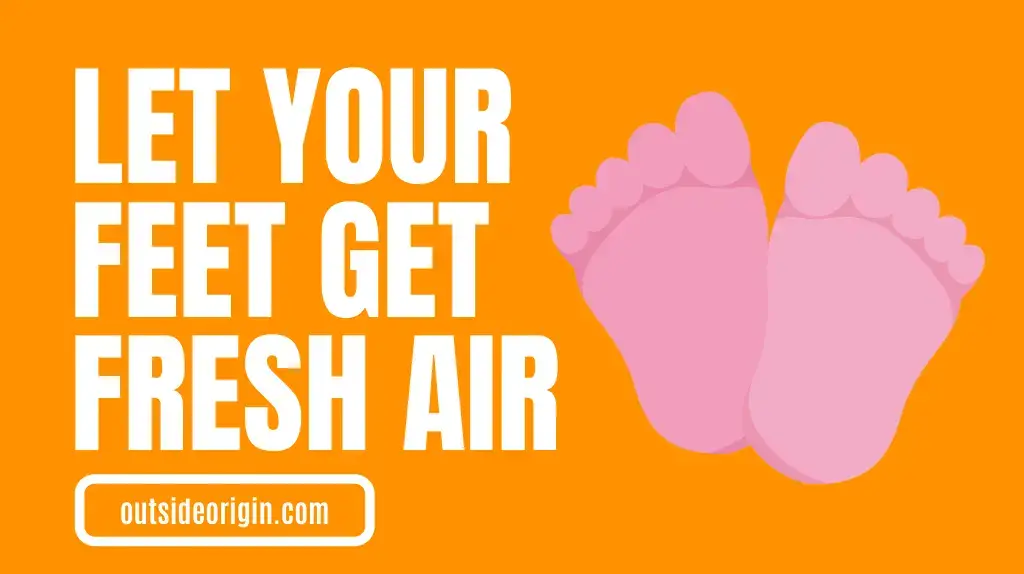
Some people don’t like to take their boots off and let their feet breathe for a while, but it’s actually really beneficial.
I usually try to take my shoes/boots off around lunchtime so my feet can get some fresh air inside. This helps prevent sweaty / moist feet from occuring.
Getting your feet to get some fresh air really gives them a chance to relax after being in the same position for so long.
Just make sure you have some clean socks with you to change into if your boots start smelling too bad.
If you are feeling lazy you can just get moisture-wicking socks while hiking as these will remove the excess sweat from your feet.
14. Make sure your backpack is lightweight
If your backpack is too heavy then that can cause excess pressure and strain on your feet and toes.
Try to make sure your backpack is lightweight and capable of carrying all the items you need for a hike without overpacking it too much.
That way, there won’t be any pressure building up on your toes or feet which can cause them to become sore after a hike.
This Assaultpack is what I use because it’s super lightweight and it has every other thing most hiking backpacks have.
I know there are a ton of different backpacks out there that are WAAAY too heavy because they try to maximize storage and forget about the whole backpack needing to be lightweight.
15. Take advantage of some foot powder
Try to take advantage of some foot powder if you feel like your feet are becoming sweaty.
Use foot powder like Gold bond which is designed specifically to soak up moisture and prevent blisters from occurring.
If you get any generic foot powder that should work, however, you want to be careful with sweating as most of these generic foot powders tend to clump up because of sweat and moisture.
16. Walk down in a zigzag pattern to avoid toe injury
This is a tip I’ve been told by some people and it’s basically to walk down in a zigzag pattern instead of just going straight.
That way, you’re not walking directly into any type of toe injury that might occur from stepping on an obstacle with your toes.
If you have hiking/trekking poles then this will be even easier since you have another set of arms to help balance yourself.
This would take more time but I’d rather be safe than sorry.
17. Have breaks in between walking downhill
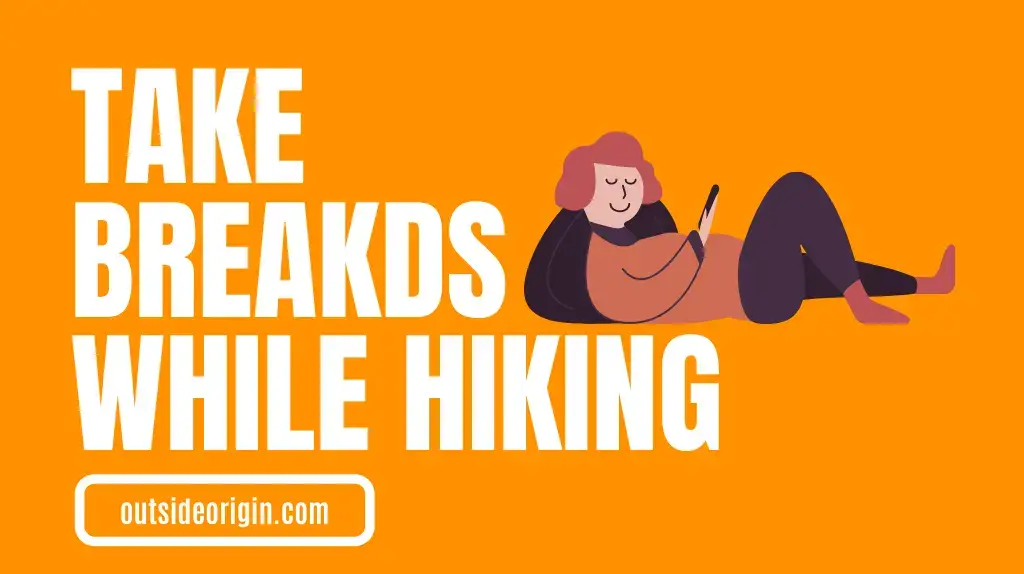
When hiking downhill you want to make sure you don’t rush because rushing can cause you to slip, fall or even twist your ankle.
If you go too fast then there’s a chance that pressure will build up near the toes which can cause them to become numb after a long time of walking downhill.
Make sure you have plenty of breaks in between walking downhill so that way you won’t feel any pain on the top of your feet near the toes.
Also, if you have any health issues with your feet, ankles or legs make sure you follow this tip as they can become very sore or cause some complications.
18. Keep your feet clean and dry
This is pretty much a given but you should always keep your feet clean and dry when going hiking.
This means washing them if they’re sweaty or dirty and drying them off properly before putting your socks back on.
If you have any open wounds then it’s important to keep those clean too so that way there won’t be any dirt getting in due to the wound being exposed.
Conclusion
Hiking downhill can be a lot of fun but it’s important to make sure you’re protecting your feet and toes when doing so.
If you simply take these 18 tips into consideration, then there shouldn’t be any issues with your toe (hopefully).
Feel free to share this post around to help other hikers and trekkers protect their toes while hiking downhill!
Can You Do Me A Small Favor?
I have put a lot of time & effort into writing this post to provide you with the best info out there.
It’ll help me out if you could consider sharing it on your social media networks. You are also allowed to take any photo you want from my blog as long as you credit and link back!
Appreciate it! ❤️️

Hey, I am the founder of Outside Origin! I love hiking in my spare time and have gone to various different hikes. You can check out our about us section to learn more about what our team and I do over at Outside Origin.

